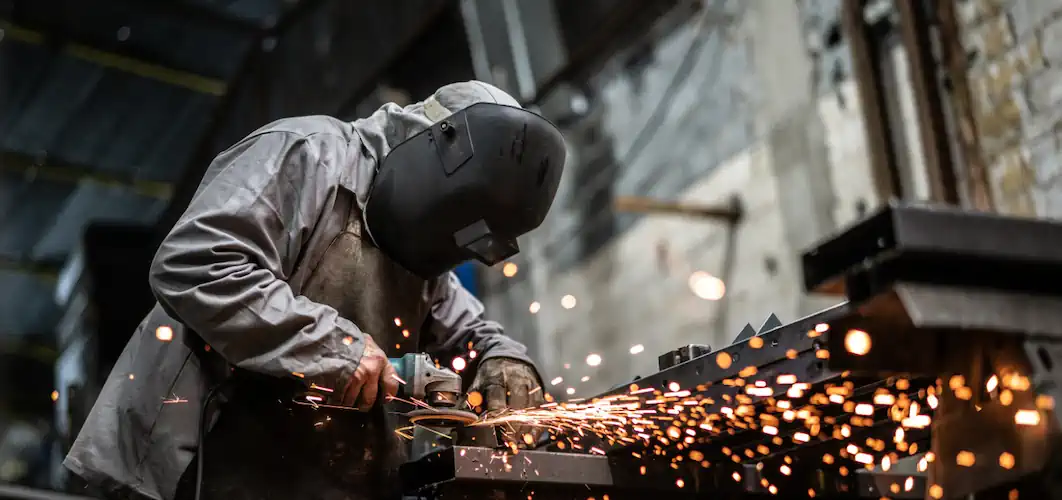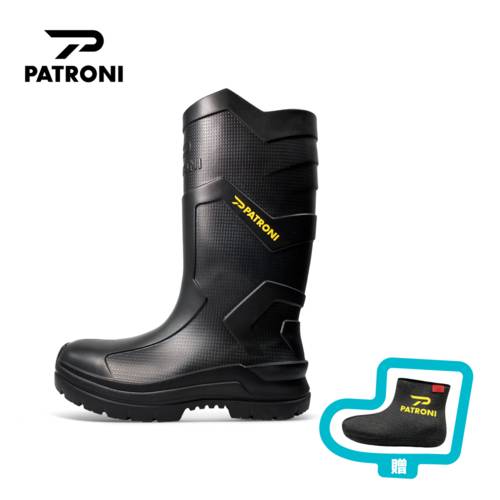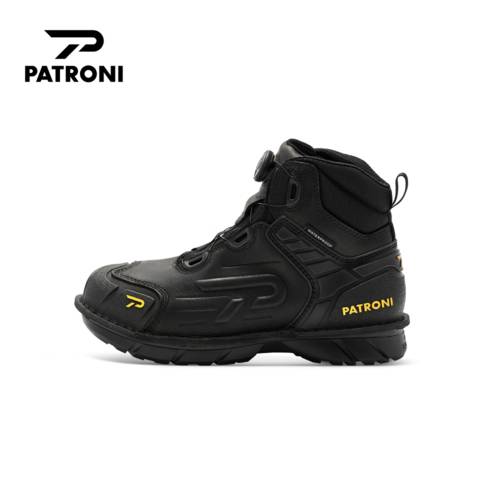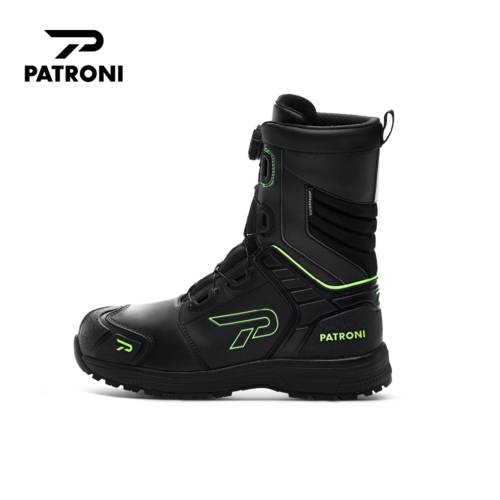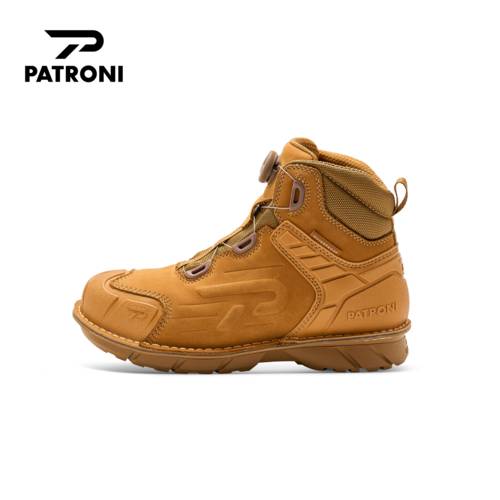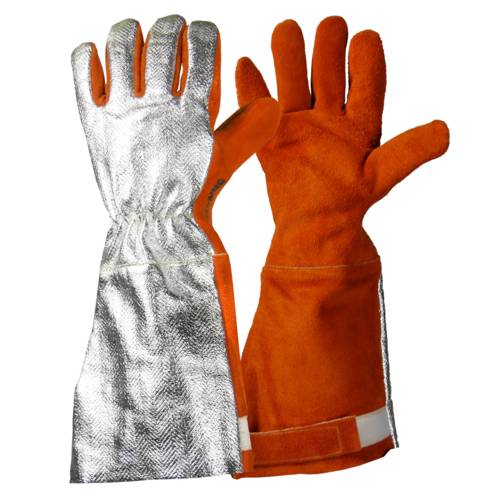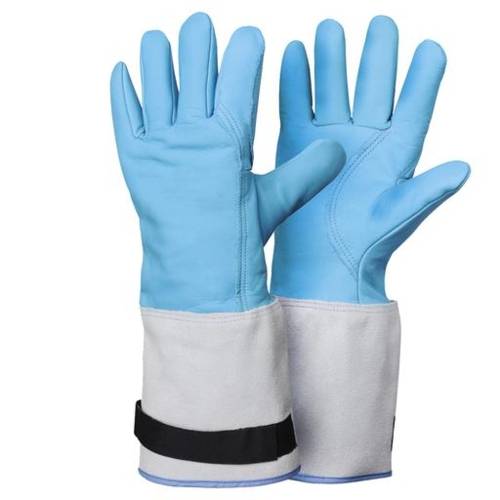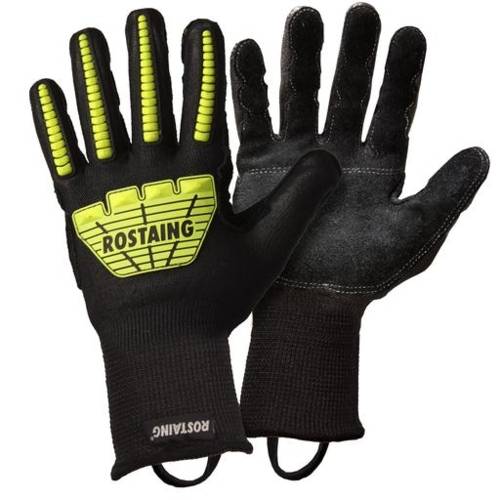Reducing Electrocution and Struck-by Accidents in Construction Sites
Steps in reducing the electrocution risks
#1 Identifying Potential Hazards

One of the first steps in addressing electrocution risks and ensuring worker safety on the construction site is identifying potential hazards. Electrical hazards can stem from numerous sources, including but not limited to:
- Overhead power lines
- Damaged electrical tools and equipment
Power tools with frayed cords, broken switches, or damaged insulation can pose a significant electrocution risk if not properly addressed.
- Wet conditions
Electricity and water are a dangerous combination, and construction sites with pools of water or wet surfaces can increase the risk of electrocution.
These high-voltage lines are not always visible in the workplace but can be extremely hazardous if struck or contacted by equipment.
Businesses should be aware that some materials may conduct electricity - for example metal ladders or scaffolding can become electrically charged if they come into contact with live wires or terminals.

#2 Developing & Implementing Safety Measures
Once hazards have been identified, it's necessary to develop and implement safety measures that will help reduce the risk of electrocution on the construction site. Some potential safety measures to consider include:
- Offering comprehensive training on safe work practices and recognizing electrical hazards.
- Instituting guidelines and protocols for maintaining and inspecting tools, equipment, and electrical systems.
- Implementing lockout/tagout procedures to prevent accidental energization of electrical systems while they are being worked on.
- Establishing emergency response plans for dealing with electrical incidents, including first-aid provisions and emergency shutdown procedures.
#3 De-energizing Electrical Systems
One effective safety measure for preventing electrocution injuries is to de-energize electrical equipment whenever possible. Following steps such as checking power sources, verifying voltage levels, isolating electrical devices, and utilizing covers and shields can go a long way in safeguarding your workplace from electrocution hazards.
#4 Appropriate Use of Personal Protective Equipment
Construction workers exposed to electrical hazards should wear appropriate PPE. Such safety gear may include safety helmets, insulated gloves, safety glasses, and appropriate footwear. Using PPE will not completely eliminate the risk of electrocution, but it can greatly reduce the potential for injury when employed correctly.
#5 Regular Inspections and Maintenance
Developing and maintaining a comprehensive inspection and maintenance program is vital to ensuring electrical safety. Regular checks of electrical systems, tools, and equipment can identify potential hazards before they pose an immediate threat. Making sure that all cords used onsite are tested regularly for safety and wear-and-tear damage so that any issues can be addressed before they cause harm or injury. Additionally, incorporating regular maintenance can help to extend the lifespan of electrical devices while improving their reliability and safety.
#6 Additional Steps For Protection
In addition to the above measures, there are other steps employers can take to protect their employees from electrocution risks during construction projects. This includes prohibiting employees from working near energized parts of equipment or installations; providing proper grounding for all power sources; requiring the proper use of properly rated extension cords; ensuring that all power tools are tested regularly; limiting access to nonessential areas where electricity is present; making sure workers wear protective clothing such as hard hats and boots; and developing emergency plans in case of accidental contact with energized parts/objects. All these steps will help reduce the risk of electrocution on construction sites.

What Are Struck-by Accidents?
Struck-by accidents occur when someone is struck by moving machinery or equipment, or when an object falls or is thrown from a height. These types of accidents often result in serious injuries such as broken bones, lacerations, head trauma, and even death.
- Hazards Posed by Moving Machinery and Equipment
- Hazards Posed by Falling or Flying Objects
Another hazard posed on construction sites is falling or flying objects. These objects can include anything from tools and debris to large pieces of equipment, which can cause serious injury if they strike a worker below. To mitigate this risk, it is important for workers to wear protective headgear such as hard hats at all times when working at heights or near where heavy objects may fall from above. It is also important for employers to use barricades or warning signs around areas where debris may fall from above so that workers know when it’s safe to enter those areas again after work has been completed in those areas.
One of the biggest hazards faced on construction sites is posed by moving machinery and equipment. The nature of these machines means that workers may not always be aware of them, making them particularly hazardous if not properly managed. It is important to ensure that all workers in the vicinity are adequately trained and supervised while these machines are being used. Additionally, all operators should wear high-visibility clothing so that they can easily be seen by other workers on the site.
Safety Measures for Struck-by Accidents
The most common types of struck-by accidents include being hit by construction equipment like cranes, forklifts, or trucks, falling objects like tools or debris, and flying objects like small particles or shrapnel from power tools. It's crucial that business owners recognize these risks and implement the appropriate prevention measures to ensure the safety of their workers.
- Safety Barriers
- High-Visibility Clothing
The use of high-visibility (hi-vis) clothing is essential when it comes to preventing struck-by accidents in the construction industry. Wearing hi-vis apparel such as reflective vests, jackets, and helmets ensures that workers are easily seen by equipment operators and other team members, particularly in low-light conditions or when working in a busy, congested area. Make sure that all workers on your construction site are wearing the appropriate hi-vis attire and that new employees are provided with the necessary gear upon starting work.
- Warning Signs
- Training & Communication
Proper training and communication are necessary components in the prevention of struck-by accidents. All employees must be adequately trained in the safe operation of equipment and machinery, and they must understand any relevant safety protocols in place.
Regular safety meetings should be held to discuss potential hazards, review safety procedures, and encourage open communication among workers about any concerns they may be facing. A well-informed and well-trained workforce will be better equipped to identify and avoid struck-by hazards on the construction site.
One key step in reducing the risk of struck-by accidents is the proper installation and use of safety barriers. Barriers help to create designated work zones, keeping employees safe from moving equipment and providing a level of protection from falling and flying objects.
There are various types of barriers, including plastic, wire rope, and concrete. The type of barrier you choose will depend on the specific requirements of your construction site. Make sure that all workers are aware of the designated work zones created by these barriers and that they adhere to these boundaries at all times.
Warning signs play a crucial role in struck-by accident prevention. Clearly visible signs should be placed throughout the work site, alerting workers to potential hazards such as moving equipment, overhead loads, or areas where flying objects may be an issue. Effective warning signs can include simple and clear graphics or text that quickly and efficiently communicates the potential hazard. Ensure that all workers are aware of the meaning behind each warning sign and why they are essential to maintaining overall job site safety.

Caught-In or Between Accidents
Working on construction sites can be dangerous. One of the most serious risks is getting caught-in or between something, like an object or structure, resulting in crushing injuries or even death.
- Risks of Getting Trapped or Crushed by Equipment
- Risks of Getting Trapped or Crushed by Materials
Materials like concrete blocks, steel beams, and other heavy objects can also pose a risk if they fall on a worker while they are onsite. It’s important to ensure that any materials being moved around the site are securely fastened and inspected regularly for wear and tear. Workers should also make sure to wear proper safety gear like hard hats and boots when working near any potentially hazardous material.
- Risks of Collapsing Structures
- Risks of Getting Trapped or Crushed by Materials
Materials like concrete blocks, steel beams, and other heavy objects can also pose a risk if they fall on a worker while they are onsite. It’s important to ensure that any materials being moved around the site are securely fastened and inspected regularly for wear and tear. Workers should also make sure to wear proper safety gear like hard hats and boots when working near any potentially hazardous material.
Heavy machinery used in construction work carries with it the risk of trapping and crushing workers if they are not careful. This includes large bulldozers, excavators, cranes, and other heavy equipment that can roll over workers if their guardrails are not secure. Construction workers should ensure that all guardrails around construction vehicles remain secure during operation and that no one stands too close to them when they are being operated.
Collapsing structures can also trap and crush unsuspecting workers who may be underneath them at the time of the collapse. This is why it’s so important for businesses to follow all safety regulations when constructing buildings and other structures onsite. They must ensure that all beams and support systems are properly secured before anyone enters the building site, as well as inspect any pre-existing structures for signs of weakness or instability before allowing anyone inside them.

Safety Measures for Caught-in or Between Hazards
- Implement Strict Lockout/tagout Procedures
- Ensure Proper Equipment Maintenance
Regular maintenance of machinery is essential to avoid equipment malfunctions that may lead to caught-in or between accidents. In particular, any moving parts subjected to repetitive motions, pinch points, or areas where workers could potentially become trapped should be regularly checked and maintained. Providing regular, thorough maintenance services will ensure that equipment operates safely and efficiently, reducing the likelihood of accidents.
- Conduct Regular Inspections
- Raise Safety Awareness
Materials like concrete blocks, steel beams, and other heavy objects can also pose a risk if they fall on a worker while they are onsite. It’s important to ensure that any materials being moved around the site are securely fastened and inspected regularly for wear and tear. Workers should also make sure to wear proper safety gear like hard hats and boots when working near any potentially hazardous material.
- Develop Comprehensive Safety Programs
Having well-defined safety programs in place is vital to reduce the risk of caught-in or between accidents on construction sites. These programs should incorporate employee training sessions, toolbox talks, regular safety meetings, and emergency preparedness measures. Creating a strong safety culture will help you maintain a compliant workplace and protect your employees from harm.
When equipment or machinery is being serviced or maintained, it is important to follow proper lockout/tagout procedures to prevent accidental startup or release of energy. In the construction industry, this is especially relevant when dealing with heavy equipment such as cranes, bulldozers, or tractors. Make sure your employees are trained and competent in these procedures and provide ample signage displaying the protocol for all workers to see.
Conduct regular safety inspections of your construction site to identify any potential hazards or potential areas where caught-in or between accidents could occur. Look for any worn, damaged, or improperly set up equipment, and take corrective action promptly to minimize the risk of injuries or fatalities. Implementing this proactive approach will help you to identify and prevent any hazards before they become a threat.

Training and Education To Prevent Construction Site Accidents
It is the responsibility of business owners to ensure all workers have the training and education needed to confidently identify hazards, use safe practices, and properly utilize personal protective equipment. With that in mind, let’s explore how businesses can provide training and education for hazard prevention in the construction industry.
- Hazard Identification Training
- Safe Work Practices
Once workers know how to identify hazards, they need to learn how best to avoid them during their daily tasks. This includes educating workers on safe work practices such as proper lifting techniques, using ladders safely, wearing protective clothing and using tools correctly. It is important employers provide comprehensive instruction in each of these areas so that everyone knows what is expected of them in order to stay safe. Additionally, employers should make sure workers understand the importance of following safety protocols at all times and not taking unnecessary risks while on the job site.
- Proper Use of Personal Protective Equipment
The first step toward safety is teaching workers how to identify hazards in their environment. This includes understanding the signs of physical danger as well as recognizing potential areas where injury may occur. For example, trips or slips caused by debris on a walkway or an exposed electrical system that could cause electric shock must be identified as potential risks before they become a problem. Workers should be trained to look out for small details like these that could lead to accidents or injuries if left unaddressed. Employers should also consider providing additional training on identifying psychological hazards such as harassment or bullying which can cause stress-related health issues over time.
When it comes to construction sites, PPE can help reduce the risk of injury if used correctly. Business owners are responsible for providing this equipment and making sure workers understand when and why it must be worn during certain tasks – such as hard hats when working around overhead power lines or safety glasses when using power tools. Providing employees with PPE will not only protect them from harm but also demonstrate your commitment to their well-being through investment in their safety training program.
Case Studies on Construction Site Accidents
An investigation of the 2016 Formwork Table Collapse in West Palm Beach, Florida resulted in the death of one employee. The authorities identified several areas of deficiency contributing to the collapse including inadequate anchoring of the legs to the floor, failure to comply with its own “best practices”, and failure to use a fall protection arrest system.
According to findings and logs on the material safety data sheets, anchoring of the legs was done haphazardly with only two front legs secured with one anchor. Additionally, the table-setting crew did not follow best practice documents for anchoring the table. Also, two employees used bracings of nearby formwork tables as anchors without ascertaining their capacity to withstand force. Finally, the legs were inadequately designed and not properly anchored.
In February 2016, a pre-engineered metal frame building collapsed at Bryant University. Six workers were injured as revealed by x-rays. Findings from authorities and government agencies showed that the contractor was responsible for ensuring the stability of the structure during erection, and failed due to inadequate bracings in violation of OSHA regulations. The contractor also did not follow the manufacturer's recommended erection procedure or provide adequate bracing during erection, nor were there any calculations to support their plan. To make matters worse, the contractor used temporary support cables but disconnected them before completing the erection, rendering the structure unstable and negligent.




